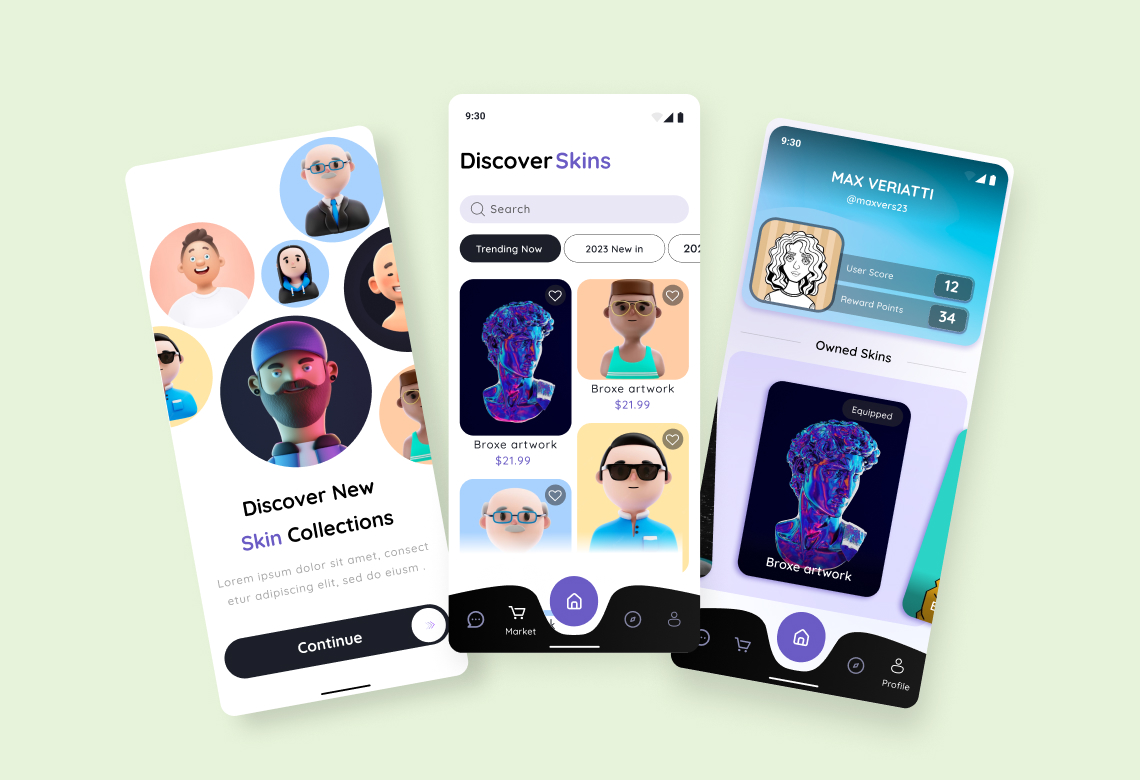Introduction
SkinCraft, a groundbreaking mobile application focusing on NFT (Non-fungible Token) 3D Skins, recognized the booming potential in the intersection of digital art and blockchain technology. The team aimed to create an accessible platform to buy, sell, and interact with 3D skins as NFTs, giving digital artists and collectors a unified marketplace. They decided on React Native for application development and Figma for design, given their expansive capabilities and collaboration features. This case study outlines SkinCraft’s development process, challenges encountered, solutions applied, and the eventual benefits of their journey.
Pre-Development Scenario
In the burgeoning world of NFTs, SkinCraft identified a unique niche – 3D skins for gaming and virtual reality. There was a market gap for a platform where creators could mint their 3D designs as NFTs and collectors could purchase them. SkinCraft’s goal was to fill this gap with an intuitive, secure, and feature-rich mobile application.
App Development and Design Process
The process was divided into four crucial stages:
Planning: The team conducted in-depth market research and defined the functionalities needed to deliver a seamless and engaging user experience.
Design: Using Figma, the design team created a visually appealing, user-friendly interface with a focus on showcasing the 3D skins in an immersive way.
Development: The developers used React Native to convert these designs into a functional app. The choice of React Native allowed for efficient cross-platform development, ensuring a consistent experience for both iOS and Android users.
Testing & Launch: The application underwent stringent testing for functionality, user experience, and security. After successful testing, the app was released on both the Google Play Store and Apple App Store.
Challenges and Solutions
The team encountered several challenges during development:
Blockchain Integration: Integrating blockchain technology to handle the NFT transactions was a complex task. The team leveraged Ethereum’s ERC-721 standard, which is specifically designed for NFTs, to facilitate secure and efficient transactions.
3D Rendering: To ensure a high-quality display of 3D skins, the developers needed to implement advanced 3D rendering techniques. They utilized WebGL and Three.js for this, allowing users to interact with the 3D skins directly within the app.
Data Security: Given the financial nature of the app, data security was a top priority. The team used encryption, secure API interactions, and followed best security practices to ensure the safety of user data.
Results and Benefits
After the launch, SkinCraft experienced considerable success:
User Engagement: The immersive design, smooth functionality, and unique market proposition led to high user engagement and positive reviews.
Marketplace Transactions: The platform facilitated numerous transactions, indicating active buying and selling of 3D skin NFTs, which solidified SkinCraft’s position in the market.
Increased Downloads: The unique value proposition of the app led to a surge in downloads on both Android and iOS platforms.
User Satisfaction: The secure transactions, ease of use, and innovative approach resulted in high user satisfaction levels.
Conclusion
SkinCraft’s successful development journey highlights the power of React Native and Figma in crafting high-quality, innovative applications. Their vision, coupled with the right technology, led to a platform that broke ne w ground in the NFT space. This case study emphasizes the potential of combining emerging technologies like NFTs with user-friendly design and development tools to create applications that stand out in the market.
